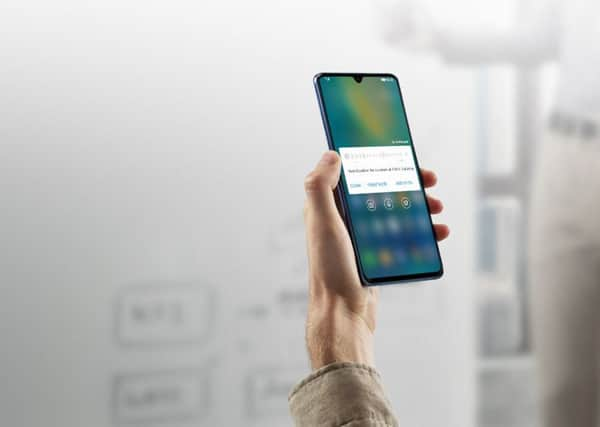Why the latest phones are more expensive than ever


But the expectation that prices will fall in inverse proportion to processing power has somehow been forgotten along the way.
It is certainly the case that desktop PCs and even laptops are more affordable now than they have ever been, but it is in the mobile phone arena that the most intensive development is taking place – and there, prices have gone through the roof.
Advertisement
Hide AdAdvertisement
Hide AdApple broke the £1,000 barrier earlier this autumn, and now, hot on their heels, comes the Chinese maker Huawei, with a flagship model claimed to have the most powerful processor on the market.
The astronomical price tags on all these phones – the Huawei handsets will come in at three figures rather than four, but only just – have breathed new life into the contract market, the original model for renting phones instead of buying them. Around £50 a month suddenly seems like a reasonable deal, especially if your firm is paying.
The Huawei Mate 20, Mate 20 Pro and Mate 20X, all of which are pitched against flagship models from Samsung, as well as Apple, are big beasts in every sense of the word. All have screens in excess of six inches, with the largest of the three measuring 7.2 inches – bigger than many tablets. This, confusingly, is not the “pro” model, which is distinguished instead by a camera with double the pixel density and 50 per cent more memory, but the 20X. Its larger screen works with Huawei’s companion stylus, making it a direct competitor to Samsung’s Note phones, which come with styli of their own.
And it’s is not just tablets with which the new phones are converging. Huawei is touting the Mate 20 range as rivals to the Nintendo Switch, a handheld device that looks a little like a phone but is actually a gaming console.
Advertisement
Hide AdAdvertisement
Hide AdI doubt that slightly sub-£1000 phones and games consoles are aimed at the same buyers, but I may be underestimating the spending power of today’s teens and twenties.
But the specification of the Huawei range, especially their use of “dual neural processing units”, which use artificial intelligence to share the workload, means that Apple can no longer automatically be considered the industry’s fount of innovation.
At the very least, Huawei has thrown down a gauntlet to the rest of the industry, to innovate or get out of the way. And here is where the trickle-down effect should work to the advantage of those of us who want to spend only a modest amount on our next phone – because the race for faster processors and better cameras will make today’s cutting edge chips tomorrow’s blunt instruments. The faster the development at the top of the market, the quicker the effect on the rest of it.
The proof of this is that Huawei’s budget model, the Honor 9 Lite – which has a very capable eight-core processor, 3GB of memory and a screen slightly smaller than six inches, is already £20 less than when I last looked at it, just three months ago. A little under £150 is all you will now pay for this model on the high street, with no monthly contract.
Here is Moore’s Law working as it should: no matter how much the new technology initially commands, it’s only a matter of time before it’s kicked down to the bargain basement.